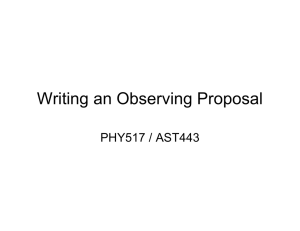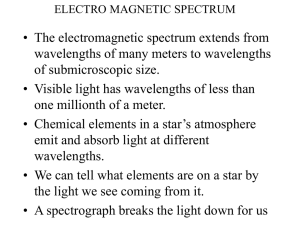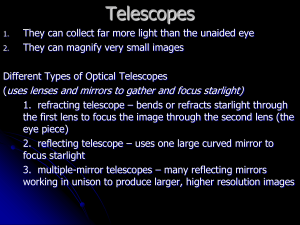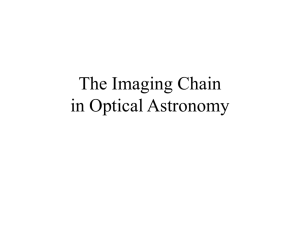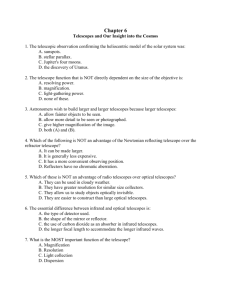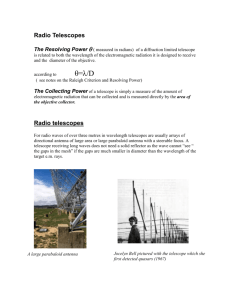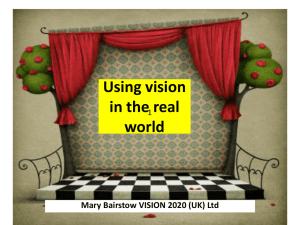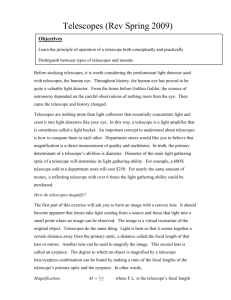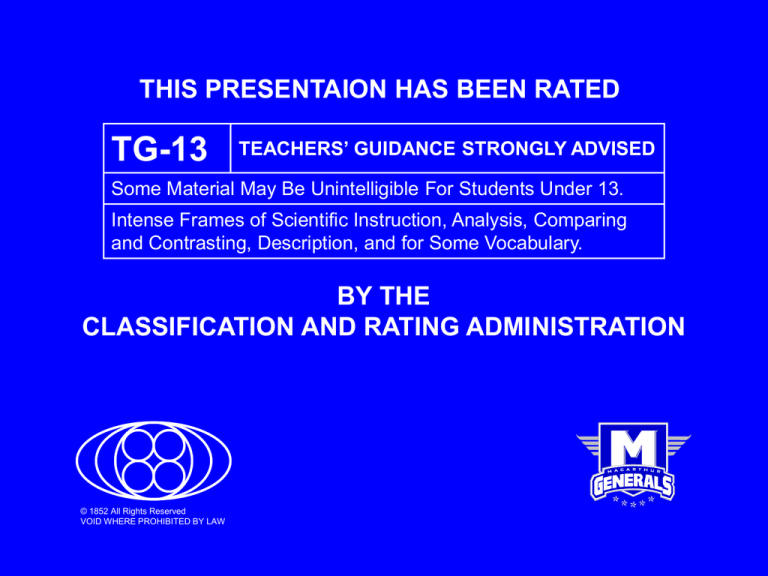
THIS PRESENTAION HAS BEEN RATED
TG-13
TEACHERS’ GUIDANCE STRONGLY ADVISED
Some Material May Be Unintelligible For Students Under 13.
Intense Frames of Scientific Instruction, Analysis, Comparing
and Contrasting, Description, and for Some Vocabulary.
BY THE
CLASSIFICATION AND RATING ADMINISTRATION
© 1852 All Rights Reserved
VOID WHERE PROHIBITED BY LAW
PBIS ANTI-VACUITY
The authorized reproduction or distribution of
this copyrighted work is highly encouraged.
Lethargic obtuseness is insubordinate and is
discouraged by PBIS, as it may result in little
or no monetary gain after secondary
education or a fine of $250,000.
© 1852 All Rights Reserved
VOID WHERE PROHIBITED BY LAW
ASTRONOMY
Tools of the
ASTRONOMER
OBJECTIVES
By the end of this presentation, students will
be able to…
• Explain the value of each tool used by the
astronomer.
• Compare the similarities and contrast the
differences between the types of telescopes.
Naked EYE
What is visible:
• The sun
• The moon
(Mercury, Venus,
• 5 planets
Mars, Jupiter, Saturn)
• 25 Open Clusters (loose groups of stars)
• 9 Globular clusters
• 8 Nebulae (gas clouds)
• The Milky Way
• About 6000 Stars
Binoculars
ADVANTAGES:
• Easy to use
• Very portable
• Relatively inexpensive
• Provides a wide field of view
• Ideal for beginners
• Useful for advanced viewers
Binoculars
USES:
• Help find way around constellations
(especially in the city)
• See double stars more sharply
• Better resolution of star clusters
• Following artificial satellites
• Locate and identify planets
• View surface features of the moon
• NEVER, EVER look into the sun!!!
Binoculars
SPECIFIED DESIGNATIONS:
Binoculars are designated using two numbers
• M – magnification
– The greater the magnification, the dimmer
the object and smaller the field of view
• APERTURE – diameter of the front lens
– The greater the Aperture, the brighter the
object
• Optimal designation: M : APERTURE = 1 : 5
6x 30; 7x 35; 8x 40; 10x 50
Optical Telescope
PURPOSES:
• To gather more light than the human eye
– The Light Gathering Power increases
with increasing lens diameter.
– LGP = D2
(D is measured in cm.)
– The Limiting Magnitude is the dimmest
an object can be to be seen though the
telescope.
– MagLim = 2.7 + 5logD
Optical Telescope
PURPOSES:
• To resolve (separate) two distant objects
– The Resolution of a telescope measures
how well a telescope can form a sharp
image; how close two points can be before
they look like one point.
– R = 116/D (R is measured in sec of arc)
Optical Telescope
PURPOSES:
• To magnify the image formed
– Mag = fo / fe
– Increasing the magnification is done by
decreasing the fe.
– Highest Magnification = 20 D
Optical Telescope
TYPES:
• Refractors – gather light using an objective
lens
– Relatively inexpensive
– Easier to use than reflectors
– Good quality optics yield best resolution
fe
Eyepiece
fo
Objective Lens
Optical Telescope
TYPES:
• Reflectors – gather light using an objective
mirror
– Greater LGP and magnification
– Easier to build than refractors
Eyepiece
– Lightweight and better
fe
resolution
fo
Objective Mirror
Optical Telescope
TYPES:
• Multiple Mirror Reflectors – gather much
more light using many mirrors as the
objective mirror.
– VERY expensive
– Allows viewing very dim
objects
Objective Mirror
CCD Telescopes
The Charge Coupled Device is an array of
photocells that collects the light gathered by
the telescope and generates a digital image
of the object. This image is stored
electronically and retrieved for later viewing.
• The CCD is more sensitive to light;
• Can see farther into space with more detail;
• Is sensitive to a broader range of light, not
just visible light.
CCD Telescopes
The CCD is sensitive to a broader range of
light, not just visible light:
Receiver
(CCD enclosed)
• Radio Telescopes
• Microwave Telescopes
• Infrared Telescopes.
• Visible Light (Optical) Telescopes.
Objective Dish
• Ultraviolet Light Telescopes.
• X-Ray Telescopes.
• Gamma Ray Telescopes.
Spectroscope
The Spectroscope is a device used to
separate starlight into its various colors.
• The resulting picture is the spectrograph.
• Allows astronomers to
analyze the elemental
composition of a star.
Columnating lenses
Slits
Prism
CCD
Spectroscopy
Spectroscopy is the science of determining the
composition of something from the light it
emits.
• WHITE LIGHT
• HYDROGEN
• HELIUM
• IRON
• CALCIUM
Spectroscopy
Different types of spectra form
from different objects.
• Continuous Spectra form from glowing
solids, liquids, or hot compressed gases.
• Bright-Line, or Emission Spectra form
from glowing gas vapors.
• Dark-line, or Absorption Spectra form
from a continuous spectrum passing
through a dark gas cloud or atmosphere.
Spectroscopy
Different types of spectra form
from different objects.
• Continuous Spectra
.
• Bright-Line Spectra
.
• Dark-line Spectra
Electromagnetic ENERGY
Electromagnetic energy is radiant energy that
travels through space in waves.
• The speed at which it travels is a constant
300,000 km/s or 186,000 mph.
Speed of light = wavelength x frequency
c=lxn
• Wavelength – the distance from crest to crest.
• Frequency – the number of waves generated
each second.
Electromagnetic Spectrum
The full range of wavelengths and
frequencies that are characteristic
of this energy.
• Divided into bands for classification and
easier study.
• Each band is categorized based on its use
or source.
Electromagnetic Spectrum
Radio
LONG
LOW ENERGIES
FREQUENCIES
WAVELENGTHS
Microwave
Infrared
Visible Light
Ultraviolet Light
X-Ray
Gamma Ray
SHORT
HIGH WAVELENGTHS
ENERGIES
FREQUENCIES
Red
Orange
Yellow
Green
Blue
Indigo
Violet
ASTRONOMY
The Night Time Sky
The Celestial Sphere

